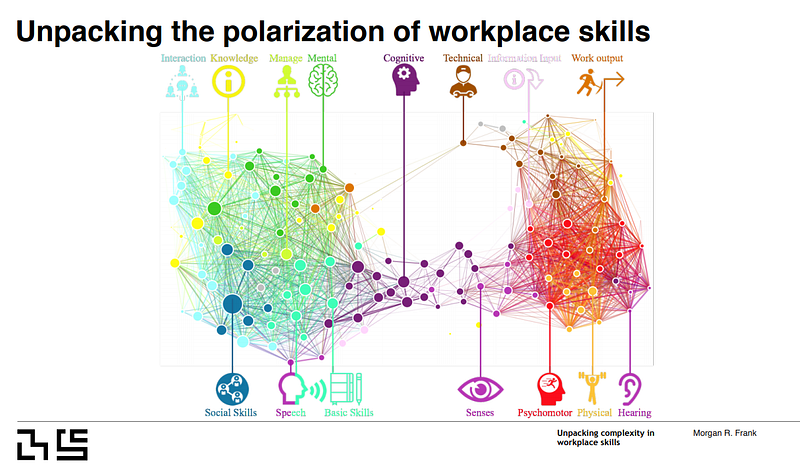
Morgan Frank, a PhD candidate at MIT’s Media Lab (in photo above), is interested in complexity; specifically, the complexity of AI, the future of work, and the socio-economic consequences of technological change. As he examines the interrelationships, crossovers, and variations of workplace skills, he’s looking for ways to better predict the impact of automation on workers and to mitigate some of the negative effects.
It’s clear that as technology advances, skill requirements need to keep pace. But on a deeper level, Frank finds disparities among local labor markets and between urban and rural markets that can constrain worker advancement and career mobility. Compounding the imbalance is the disruptive nature of machine learning and robots, causing the variations to widen even further.
At a recent MIT IDE seminar on “Unpacking Complexity in Workplace Skills,” Frank said that the “striking polarization of micro-level networks” affects macro-level labor trends including worker retraining programs, worker migration, and economic resilience. The good news is that once these trends are identified they may help improve “our forecasting of the nature of work, including the changing skill requirements of given job titles, the effects of automating technology, and the impact AI on U.S. cities.”

In a recently published research paper, Skillscape: How Skills Affect Your Job Trajectory, and their Implications for Automation by AI, Frank noted that “economic inequality is one of the biggest challenges facing society today…exacerbated by growth in high- and low-wage occupations at the expense of middle-wage occupations, leading to a “hollowing” of the middle class. Yet, our understanding of how workplace skills drive this process is limited. Specifically, how do skill requirements distinguish high- and low-wage occupations, and does this distinction constrain the mobility of individuals and urban labor markets?”
Continue reading the full blog on our Medium publication here.
